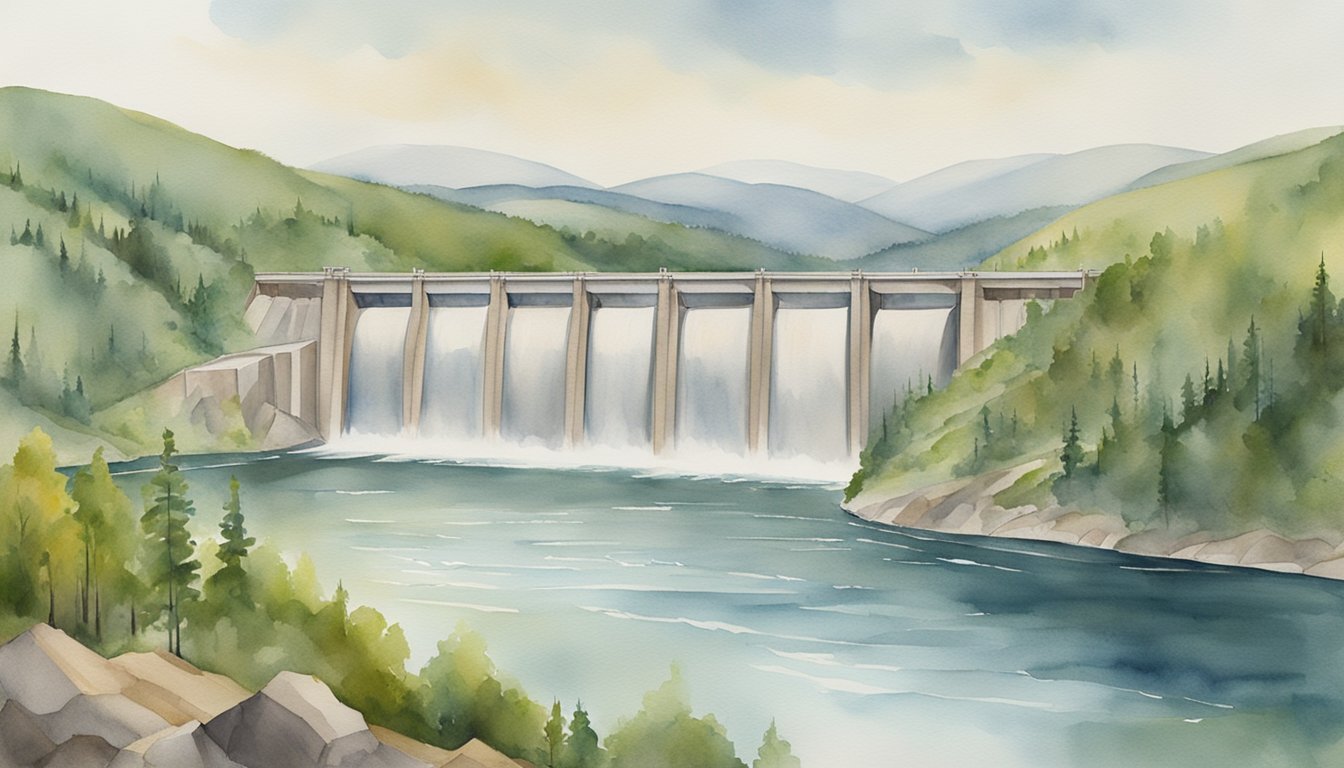Origins and Technological Advancements
The evolution of hydroelectric power is marked by ingenious human innovation, turning the natural flow of water into electricity to power our modern world.
Early Innovations and Water Power Use
Since ancient times, humans recognized the energy potential of flowing water. Over 2,000 years ago, the Greeks used water wheels to grind grain into flour, utilizing rivers and streams for mechanical tasks. Similarly, in the third century B.C., the Egyptians employed the Archimedes screw for effective irrigation, highlighting the practical application of water power.
The Industrial Revolution to Early Hydroelectric Plants
The increase in technological advancement during the Industrial Revolution greatly expanded the use of water power. Innovators like Richard Arkwright invented water-powered machinery to mass-produce textiles, demonstrating the wide-ranging utility of this energy source. By the late 19th-century, hydroelectricity took shape with the world’s first hydroelectric power plant in Appleton, Wisconsin. Using James Francis’ water turbine designs, which efficiently converted the power of falling water into mechanical energy, this signaled the rise of hydroelectric technology.
Modern Hydroelectric Technologies
Today’s hydropower plants utilize advanced technology, improving both efficiency and sustainability. Enormous advancements have been made in turbine and generator design, allowing for greater harnessing of the head and flow of water. The development of the penstock, a large pipe that delivers water to the turbines, in conjunction with powerful alternating current generators, has led to a significant increase in the production of hydroelectric power that adequately serves the high demands of modern electricity consumption.
Global Impact and Environmental Considerations

The expansion of hydroelectric power has been integral to meeting the increasing global demand for energy. Yet, while it contributes significantly to energy markets and offers a renewable electricity source, it also brings a host of environmental and ecological considerations that must be acknowledged.
Expansion of Hydroelectric Power Worldwide
Hydroelectric power has seen a substantial growth worldwide as countries seek to harness renewable energy sources. China, for example, is home to the Three Gorges Dam, the world’s largest power station by installed capacity. In the U.S., structures like the Hoover Dam and the Grand Coulee Dam are historical landmarks of significant contributions to the country’s electrical grid. Brazil and Paraguay share the Itaipu Dam, which is second only to the Three Gorges Dam in electricity generation.
Hydroelectricity in Energy Markets
Hydroelectricity plays a pivotal role in energy markets, providing a clean alternative to fossil fuels like coal and gas. The Tennessee Valley Authority in the United States and the Bureau of Reclamation oversee multiple hydroelectric projects that contribute to the grid. Other forms of hydroelectric power, such as pumped storage facilities, allow for energy storage and release to meet peak demands.
Environmental and Ecological Effects
The environmental impact of hydroelectric power plants is a topic of considerable debate. Damming rivers leads to flooded land and disrupted ecosystems, affecting species such as migratory fish. Methane, a potent greenhouse gas, is often released from the reservoirs of hydroelectric dams, contributing to climate change. Organizations like the World Commission on Dams and the International Hydropower Association work towards understanding and mitigating such impacts. Canada, India, and Mexico, among other nations, are facing challenges in balancing hydroelectric development with environmental conservation.

